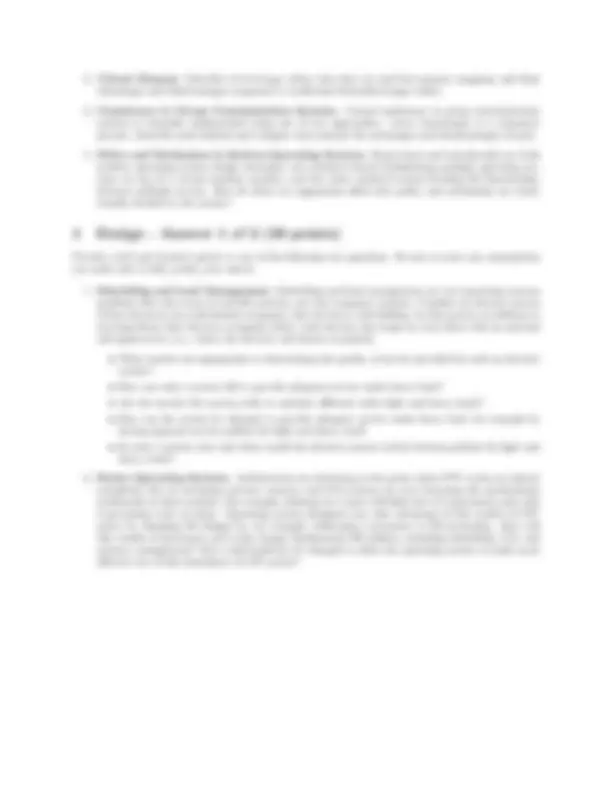



Study with the several resources on Docsity

Earn points by helping other students or get them with a premium plan


Prepare for your exams
Study with the several resources on Docsity

Earn points to download
Earn points by helping other students or get them with a premium plan
Community
Ask the community for help and clear up your study doubts
Discover the best universities in your country according to Docsity users
Free resources
Download our free guides on studying techniques, anxiety management strategies, and thesis advice from Docsity tutors
Material Type: Notes; Professor: Bridges; Class: ST: Prog Analy &Mechanization; Subject: Computer Science; University: University of New Mexico; Term: Fall 2005;
Typology: Study notes
1 / 2

This page cannot be seen from the preview
Don't miss anything!


This is a closed-book, closed-notes exam with a total of 100 points. You may not use any external source for answering these questions. Please direct any questions about this exam to Professor Bridges. Professor Bridges may be reached either in person in his office in 301B Farris, by phone at 277-3032 or 363-8798, or by email at bridges@cs.unm.edu. Turn your exam in to Professor Bridges or the front office by 5:00 PM MDT on Tuesday, August 16, 2005. Exams will not be accepted after this time except by prior arrangement with Professor Bridges. Type or write your answers to the stated number of questions in each of the following three sections. Make any reasonable assumptions necessary to answer the question, but be sure to state any assumptions that you make.
Briefly answer 3 of the following 4 questions. Your answer should be no longer than one paragraph.
Provide detailed answers to two of the following four questions. Be sure to state any assumptions you make and to fully justify your answers. Limit your answers to approximately one to two pages in length.
Define each of these terms, the trade-offs associated with each parameter, and how changes to them effect capacity, compulsory, and conflict miss rates.
Provide a full and detailed answer to one of the following two questions. Be sure to state any assumptions you make and to fully justify your answer.